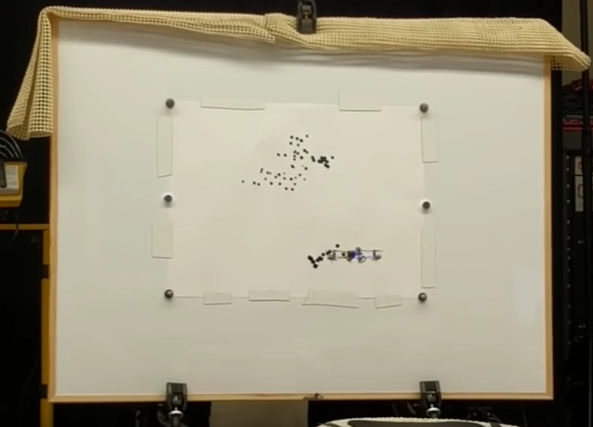While drones are being used for a plethora of applications like package delivery, monitoring wildlife, real estate, storm tracking, and plain-old hobbyist entertainment, Professor Paul Kry from McGill University’s School of Computer Science are using tiny drones to create dot drawings — an artistic technique known as stippling.

Drawing with dots may sound simple, but it’s not. Programming the aerial robots to apply each payload of ink accurately and efficiently requires complex algorithms to plan flight paths and adjust for positioning errors. Even the slightest air currents can move the lightweight drones off course.
The drones which are small enough to fit in the palm of a hand and equipped with a miniature arm that holds a bit of ink-soaked sponge. As they hover near the surface that’s about to be painted, internal sensors and a motion capture system help position them to dab the ink in just the right places.
So far, the flying robots have rendered – on paper – portraits of Alan Turing, Grace Kelly, and Che Guevara, among others. Each drawing is composed of a few hundred to a few thousand black dots of varying sizes.
“I thought it would be great to have drones paint portraits of famous computer scientists on them,” said Kry of his inspiration for the idea.
He bought a few of the tiny quadcopters online and had a student start on the task as a summer project in 2014, under a Canadian government award for undergraduate research.
Kry and his group of students will continue to work on the drones. He envisions that eventually, larger drones could be deployed to paint murals on hard-to-reach outdoor surfaces, including curved or irregular facades.
“There’s this wonderful mural festival in Montreal, and we have giant surfaces in the city that end up getting amazing artwork on them,” he added. “If we had a particularly calm day, it would be wonderful to try to do something on a larger scale like that.”

Comments are closed, but trackbacks and pingbacks are open.